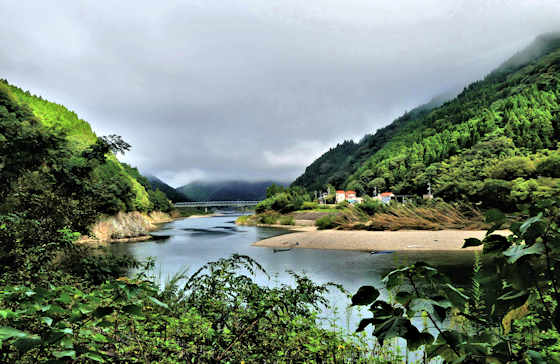The procession reaches the riverbank where two boats are waiting to ferry the mikoshi upstream.
One boat carries the young men with the bamboo and banners to replace last years. The giant Onusa is taken by road. By now the young men are inebriated. Drunkeness and matsuri go together and always have. The earliest records of japan from China in the 3rd century make mention of the Japanese love of alcohol.
The second boat carries the mikoshi, priests, musicians, kasaboko, and a couple of other village representatives.
Both boats head upstream a few hundred meters to the spot where suijin is venerated
A rocky outcropping at the base of a cliff. On the cliff above the Onusa is replaced. This one extends horizontally out from the cliff top so the Onusa is above the water below. You can just make it out in the top right of the photo. Here is also where the string of koinoburi are strung across the river in honor of Boys Day.
The young men pass up the bamboo and banners to the group above. Last years bamboo and banners are lowered down and disposed of in the river.
The priests read norito and make further offerings to Suijin.
The boats then return to the riverbank and the procession proceeds to a second spot on the Yato River. It used to go by boat,, but since the damming of the river it is too shallow and no longer navigable, so it goes by truck.
It seems to be a tradition that some of the young men end up in the river.





















